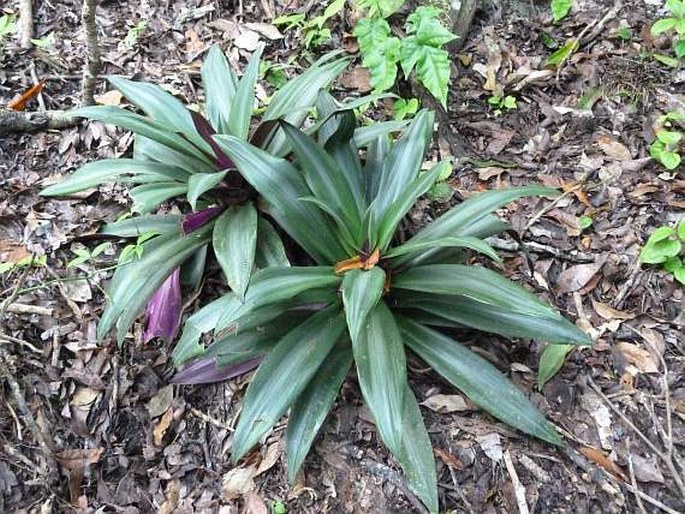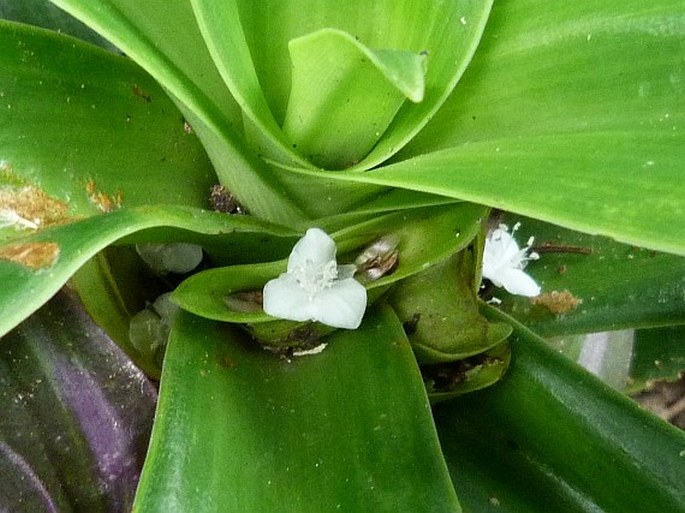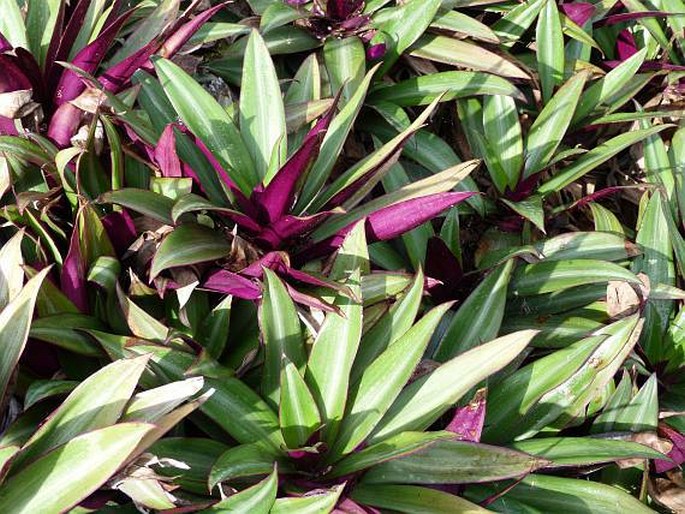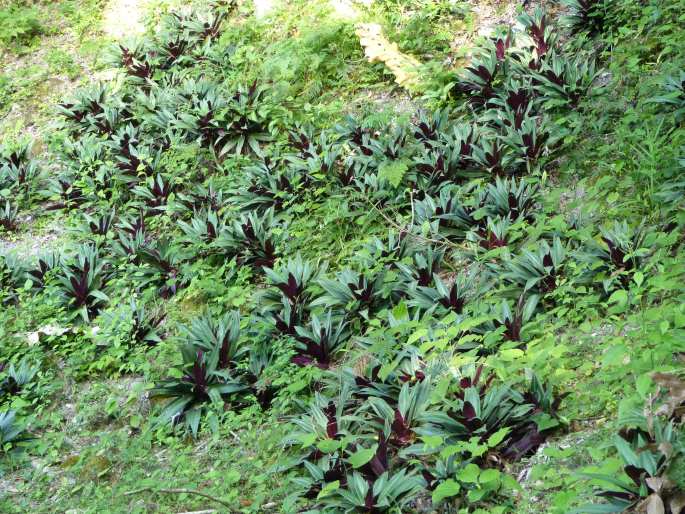Syn.: Ephemerum bicolor Moench, Ephemerum discolor Moench, Rhoeo discolor (L’Hér.) Hance, Rhoeo spathacea (Sw.) Stearn, Rhoeo spathacea f. concolor (Baker) Stehlé, Rhoeo spathacea f. variegata (Hook.) Stehlé, Tradescantia discolor L’Hér., Tradescantia discolor var. concolor Baker, Tradescantia discolor var. variegata Hook., Tradescantia versicolor Salisb.
Family: Commelinaceae R. Br.

Distribution: Central America – southern Mexico (Chiapas, Tabasco, Yucatan), Belize, Guatemala, the Lesser Antilles (Antigua and Barbuda, Barbados, Grenada, Guadeloupe, Martinique, St. Lucia, St. Vincent and Grenadines). Naturalized in the Greater Antilles, Florida and Louisiana, Costa Rica, Peru, Hawaii, Fiji, Philippines, southeastern China, Seychelles etc.
Ecology: It grows in moist forests or thickets, on rocky cliffs and old Maya ruins, at elevations from sea level to 500 m asl.

Description: Perennial herb with an underground rhizome. Stems short, 10–20(–60) cm tall; leaves sessile, imbricate, lanceolate to oblanceolate, 20–35 cm long and 3–5.5 cm wide, acuminate, glabrous, green on both surfaces or dark purple beneath. Peduncles axillary, 2–4.5 cm long, terminated at the apex by 2 bracts; the bracts opposite, broadly ovate, 3–4.5 cm long, glabrous. Inflorescence shorter than the bracts and included in them, sepals 3, ovate to lanceolate, 3–4 mm long, petals 3, ovate, 5–8 mm long, white. The fruit is an ovoid capsule.
Use: It is undemanding plant, often grown for ornament in tropical gardens and greenhouses.




These images were taken in Guatemala, Tikal (by Jindřiška Vančurová, February 16, 2015).


